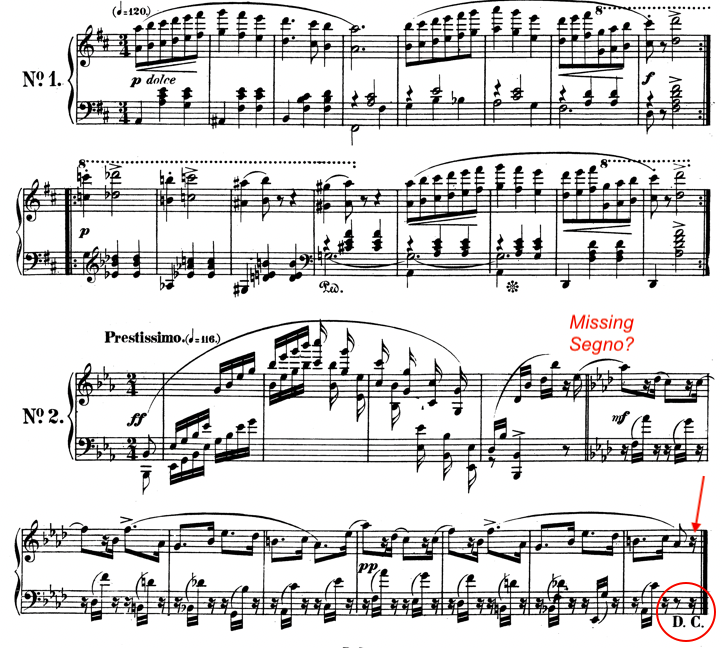Page 1 of 1
D.C. vs double-bar repeat
Posted: 24 Jun 2024, 23:51
by pfata
Hello, everyone! I would like to ask for opinions on best practices for notating repeats. I am engraving a set of hymn-like songs that have several verses and repeat whole, from the beginning. I always use a simple double-bar repeat at the end to send the reader back to the beginning. The composer does not like this, and wants instead D.C. I don’t really like D.C. without “al fine” or “al coda.” Am I missing something?
Thank you in advance!
Re: D.C. vs double-bar repeat
Posted: 25 Jun 2024, 08:09
by OCTO
D.C. simply means "from the head," and nothing extra is needed, if you don't like it.
However, try to imagine writing a computer program in Lisp or Python. What happens when you start from D.C.? When does it ultimately end, or where does it finish? Without a specified ending, your program would enter into an infinite loop, which could lead to a either crash or require a brute "kill"-function, in both cases an unpleasant execution.
Re: D.C. vs double-bar repeat
Posted: 26 Jun 2024, 15:42
by John Ruggero
I'm with you, pfata. The current practice is to use repeat marks, even if the piece has only one repeated section.
Using a D. C. is quite an old-fashioned way of handling this. But if the composer really wants it, I guess you must bow to his wishes.
As OCTO mentioned a D. C. could even lead to misunderstanding.
Schumann Papillons op. 2 no. 2 is for me such an example. In this case, many pianists repeat the entire piece. But is it really musically satisfactory to repeat the initial 4 measure introduction? And note the final 16th rest. The meter only adds up if the D. C starts with the pickup to measure 5. I would say that Schumann has omitted a necessary segno. Better that he had used repeat marks as he does throughout the rest of the piece. Papillons is a collection of odds and end that he put together later, so perhaps the D. C. is vestigial.

- Schumann op 2.png (475.98 KiB) Viewed 40484 times